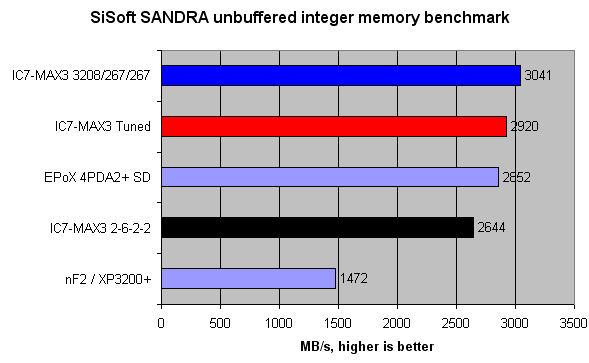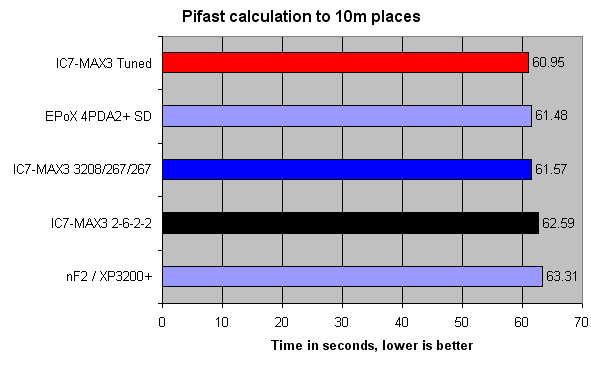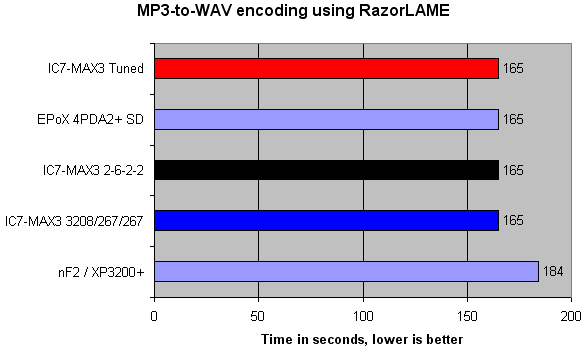Benchmarks I
Let's have a look at the unbuffered bandwidth test first.

A number of different MAX3 combinations may cause a little confusion. The standard MAX3, run at 3208.2MHz / 200.5MHz FSB / DDR401 @ 2-6-2-2 timings is shown in black. The tuned MAX3 refers to the same board but with the extra 'Street Racer' and 'Enhanced' timings applied. That's about as good as Canterwood gets at stock speeds, and it's shown in red. The 3208/267/267 refers to the overclocked MAX3 (12x multiplier) and synchronous RAM at DDR534 speeds, albeit with 3-4-4-8 Auto latencies (blue). There's a significant jump from the standard MAX3 to the tuned version, courtesy of the extra memory selections. We're a little surprised to see such a low unbuffered benchmark from the 3208/267/267 combination. Perhaps the high latencies handicap the potential performance to a large degree.

Pifast seems to concur. The tuned MAX3
leads the pack, ahead of the tuned EPoX Springdale board. The Street
Racer and Enhanced settings help shave over 1.5s from an already
impressive stock time. We've yet to see a stock sub-60s time for this
benchmark. We wonder what the Athlon FX-51 can do. Not long to find out.

A wonderfully predictable benchmark, unfortunately, as it relies on pure speed more than anything else. The ABIT, in its various configurations, would often benchmark to 166s, but it did manage a time of 165s more often than not. 3.2GHz of grunt wins the day here.









